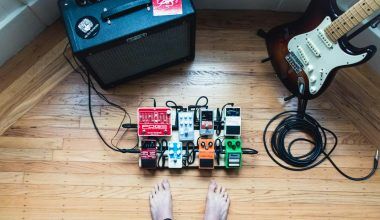In today’s digital age, the music industry has transformed significantly. Gone are the days when artists needed major record labels to distribute their music globally. With the rise of digital platforms, international music distribution has become accessible to independent artists. This guide will explore the ins and outs of international music distribution, helping you understand its importance, how to get started, and the best practices to ensure your music reaches a global audience.
Understanding International Music Distribution
International music distribution refers to the process of making your music available on various digital platforms worldwide. This includes streaming services like Spotify, Apple Music, Amazon Music, and more. The goal is to ensure your music is accessible to listeners across different countries, thereby increasing your reach and potential fanbase.
Why is International Music Distribution Important?
- Global Reach: Distributing your music internationally allows you to tap into new markets and reach a global audience.
- Increased Revenue: More listeners mean more streams, which translates to higher royalties.
- Brand Growth: Building a global fanbase can enhance your brand and open up opportunities for international tours and collaborations.
- Market Diversity: Different regions have unique musical tastes, and distributing your music internationally allows you to explore these diverse markets.
Getting Started with International Music Distribution
Step 1: Choose a Music Distribution Service
Selecting the right music distribution service is crucial for successful international distribution. Here are some popular options:
- TuneCore: Offers distribution to over 150 digital stores worldwide.
- DistroKid: Known for its ease of use and affordability.
- CD Baby: Provides comprehensive distribution services and additional features like sync licensing.
- Deliver My Tune: Specializes in empowering independent artists with international distribution and fair royalties.
Step 2: Prepare Your Music
Before distributing your music, ensure it meets industry standards:
- High-Quality Audio: Your tracks should be professionally mixed and mastered.
- Cover Art: Create eye-catching and professional cover art that meets the specifications of digital platforms.
- Metadata: Accurately input all necessary metadata, including song titles, artist names, album names, and genres.
Step 3: Distribute Your Music
Upload your music and cover art to your chosen distribution service. Ensure all metadata is correct, and select the platforms and regions where you want your music to be available.
Best Practices for International Music Distribution
Optimize Your Metadata
Accurate metadata is essential for your music to be discovered and correctly attributed to you. Include:
- ISRC Codes: International Standard Recording Codes for tracking and royalty payments.
- UPC Codes: Universal Product Codes for albums.
- Keywords: Relevant keywords in your metadata can improve searchability on streaming platforms.
Promote Your Music Internationally
- Social Media: Use platforms like Instagram, Facebook, and Twitter to promote your music to a global audience.
- Collaborations: Partner with international artists to expand your reach.
- Playlists: Get your music featured on popular playlists in different regions.
Engage with Your Audience
- Social Media Engagement: Respond to comments and messages from fans worldwide.
- Live Streams: Host live streaming sessions to connect with your international audience.
- Merchandising: Offer exclusive merchandise to fans in different countries.
Challenges in International Music Distribution
Language Barriers
While music is a universal language, promoting your music in regions with different languages can be challenging. Consider translating your promotional materials and subtitles for your music videos.
Cultural Differences
Understanding the cultural nuances of different markets is crucial. What works in one country might not work in another. Research and adapt your marketing strategies accordingly.
Legal and Regulatory Issues
Different countries have varying laws regarding music distribution, royalties, and copyright. Ensure you comply with these regulations to avoid legal issues.
Case Studies of Successful International Music Distribution
BTS: A Global Phenomenon
BTS, the South Korean boy band, exemplifies successful international music distribution. Through strategic use of social media, collaborations, and consistent engagement with their global fanbase, BTS has become a household name worldwide.
Billie Eilish: From Bedroom to Global Stardom
Billie Eilish’s rise to fame showcases the power of digital platforms in international music distribution. By leveraging platforms like SoundCloud and YouTube, Eilish reached a global audience and achieved international success.
Tools and Resources for International Music Distribution
Analytics Tools
- Spotify for Artists: Provides insights into your audience and how your music is performing globally.
- Apple Music for Artists: Offers detailed analytics and marketing tools.
- Google Analytics: Use it to track traffic and engagement on your official website.
Marketing Tools
- Hootsuite: Manages your social media presence across different platforms.
- Mailchimp: Email marketing tool to keep your fans updated.
- Canva: Design tool for creating promotional graphics and cover art.
Expanding Your Reach: Regional Insights
North America
North America is a significant market for music streaming. Platforms like Spotify, Apple Music, and Amazon Music dominate this region. To succeed here:
- Targeted Advertising: Use Facebook and Instagram ads to reach specific demographics.
- Collaborations: Partner with local artists to gain visibility.
- Playlists: Get featured on popular North American playlists.
Europe
Europe has a diverse music scene, with countries like the UK, Germany, and France being major players. Tips for European distribution:
- Localized Content: Translate promotional materials into major European languages.
- Cultural Events: Participate in European music festivals and events.
- Radio Play: Secure airplay on popular European radio stations.
Asia
Asia, especially countries like South Korea, Japan, and India, offers immense potential. Here’s how to navigate this market:
- Social Media: Platforms like TikTok, Weibo, and Instagram are crucial for promotion.
- Streaming Services: Focus on local streaming platforms like JioSaavn (India) and Melon (South Korea).
- Cultural Sensitivity: Understand and respect local cultural norms and preferences.
Latin America
Latin America is rapidly growing in the music streaming industry. Key strategies include:
- Spanish and Portuguese Content: Translate your content to cater to local languages.
- Local Collaborations: Work with Latin American artists to reach a broader audience.
- Regional Playlists: Aim to get your music on popular Latin American playlists.
Advanced Strategies for International Music Distribution
Utilizing Influencer Marketing
Influencers play a significant role in promoting music. Collaborate with influencers who have a substantial following in your target regions. They can help create buzz around your releases and reach new audiences.
Leveraging User-Generated Content
Encourage your fans to create content related to your music. User-generated content can significantly boost your visibility and engagement. Create challenges or campaigns that encourage fans to share their videos or covers of your songs.
Engaging with Online Communities
Participate in online communities and forums related to music. Platforms like Reddit, Discord, and music-specific forums can help you connect with potential fans and collaborators worldwide.
The Future of International Music Distribution
The landscape of international music distribution is continually evolving. With advancements in technology, new opportunities are emerging for artists to distribute and promote their music globally. Here are some trends to watch:
Blockchain Technology
Blockchain can revolutionize music distribution by ensuring transparent and fair royalty payments. Artists can directly receive payments without intermediaries, making the process more efficient.
Virtual Reality (VR) and Augmented Reality (AR)
VR and AR are creating new ways for artists to engage with their fans. Virtual concerts and augmented reality experiences can enhance the fan experience and provide new revenue streams.
Artificial Intelligence (AI)
AI is playing an increasing role in music recommendation and discovery. By leveraging AI, artists can better target their audience and personalize their marketing strategies.
Conclusion
International music distribution is a powerful tool for independent artists to reach a global audience and grow their careers. By understanding the process, leveraging the right tools, and adopting best practices, you can successfully distribute your music internationally and achieve your musical ambitions. Embrace the opportunities that digital platforms offer and take your music to the world.
For further reading, explore these related articles:
- Know the Ways to Get the Music Sync Licensing
- Tips for Mastering in Music
- Looking for Royalty-Free Music? Get Royalty Free Music on SoundCloud
For additional resources on music marketing and distribution, visit Deliver My Tune.






